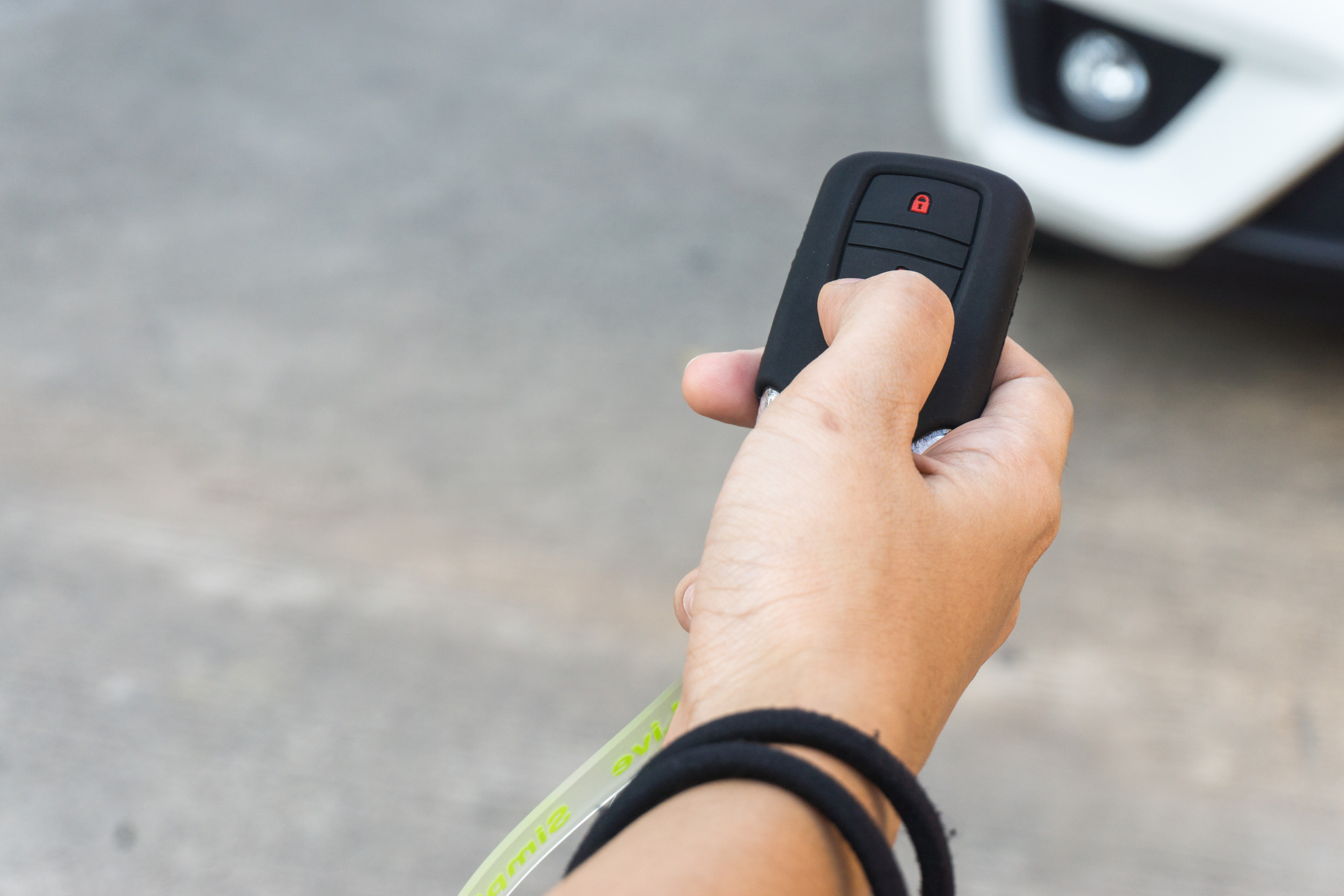
Car technology has evolved fast—but so have the tactics of criminals who exploit it. Many modern vehicles come with convenience features that, in the wrong hands, can be twisted into tools for surveillance, entrapment, or worse.
What’s especially unsettling is that these tactics don’t require breaking a window or picking a lock. They exploit the car itself, turning once-trusted functions into potential vulnerabilities. Knowing how criminals use common car features is the first step toward staying safe in a world where not all threats look like forced entry.
1. Keyless Entry Systems
Keyless entry lets drivers unlock their cars with a fob or smart device, but it also opens the door to signal hijacking. Criminals can use signal amplifiers and relays to extend the reach of a key fob signal, unlocking the vehicle without alerting the owner. This technique doesn’t break any glass or trigger alarms—it works entirely within the system’s own design. Once inside, thieves can plant devices or wait for an opportunity to ambush. Many drivers never realize their vehicle was accessed until it’s too late.
2. Child Safety Locks
Child safety locks are meant to protect kids, but in a criminal’s hands, they become a trap. When activated, these locks prevent the rear doors from being opened from the inside, even if the car isn’t locked. A criminal posing as a ride-share driver or a trusted acquaintance can engage the lock before a passenger enters. Once the doors close, the victim is effectively trapped in the backseat. This tactic turns a well-intentioned safety feature into a tool of control.
3. Automatic Trunk Release
The automatic trunk release is designed for convenience, allowing quick access to the cargo area. Criminals, however, can exploit it by hiding in or tampering with the trunk space while the car is parked. In some setups, a fob or app can be used to remotely open the trunk—even from outside the line of sight. Once the driver gets inside and the car is started, the hidden individual may use the release to enter the cabin. This can be part of a larger plan to confront or abduct the driver.
4. Interior Motion Sensors
Interior motion sensors, often part of a car’s anti-theft system, can ironically help criminals track when a car is unoccupied. By observing when sensors are triggered or not, criminals can determine if someone is inside the vehicle. Some even use jamming devices to suppress the alert notifications these sensors typically send to mobile devices. Once they know the driver is away, they can enter the car undetected using other non-invasive methods. These sensors, while built for protection, can be turned into quiet surveillance tools.
5. Valet Mode and Guest Profiles
Many modern vehicles have a valet mode or allow for guest driver profiles, designed to limit access and track vehicle usage. If a criminal gains access to a car temporarily—say, at a car wash or repair shop—they can program a new guest profile or exploit valet mode settings. These profiles can sometimes retain entry privileges, making future unauthorized access much easier. In some cases, the driver may not notice the profile at all, especially if it’s named subtly. This turns a feature meant for convenience into a silent backdoor.
6. Remote Start and Smart App Integration
Remote start systems and car apps give users control from their phones, but they also create new vulnerabilities. Criminals can hack into these apps if the user’s login credentials are weak or compromised. Once inside the app, they can unlock doors, start the engine, and track location without ever touching the car. This kind of breach doesn’t just threaten the car—it can reveal the owner’s routines, locations, and schedule. The convenience of remote access comes with serious security trade-offs.

7. Power Seat Memory Functions
Power seat memory functions store customized seat positions, but they also store driver identity and behavior. Criminals can use these settings to determine who has been using the car and even predict when specific people will be inside. In some advanced systems, seat memory profiles link to other car data like navigation history or synced phones. If someone gains access to the car or its system, this information can be weaponized. The feature, intended for personal comfort, can end up mapping a target’s habits.
Car Features Are Tools—Until They’re Traps
Modern cars are smarter than ever, but that intelligence is a double-edged sword. Features designed for comfort, safety, and convenience can be twisted into tools for manipulation and crime. It’s not enough to lock doors and keep keys hidden; staying safe means understanding how your car works and where its vulnerabilities lie. Awareness is your strongest defense in an age where not all threats are loud or violent.
Share your thoughts below—have you ever felt uneasy about a car feature you once trusted?
Read More
8 Tech Upgrades That Are Making Cars Easier to Hack
5 Car Systems That Are Collecting Your Driving Behavior
The post 7 Car Features Criminals Use to Trap You Without Breaking In appeared first on Everybody Loves Your Money.







